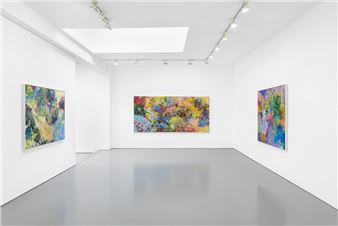Vedova Tintoretto. In dialogo
From 19 September 2025 to 12 January 2026, Palazzo Madama – Museo Civico d’Arte Antica of Turin and the Fondazione Emilio e Annabianca Vedova of Venice will be hosting the exhibition Vedova Tintoretto. In Dialogue. This exceptional event has been planned to bring together the art of two great Venetian painters, each of whom was one of the greatest artists of his time: Jacopo Robusti, known as Tintoretto (Venice, 1518-1594), and Emilio Vedova (Venice, 1919-2006). Their work will be read in parallel, so as to address the evolution of Vedova’s work in comparison with that of his chosen master, investigating similarities and consonant (or dissonant) themes underlying their individual expressive choices. Tintoretto was fundamental for Vedova’s artistic training, and the exhibition at Palazzo Madama will highlight the impetus and strength of the complex relationship between the two artists by juxtaposing masterpieces by both the Renaissance master and the exponent of Arte Informale.
The project for the exhibition stems from the exceptional opportunity to display – in Turin – one of the last and most paradigmatic works of Tintoretto’s human and artistic development: the Self-Portrait of 1588, on loan from the Musée du Louvre. This canvas is much more than an iconographic model, representing, as can be seen from the interpretations by Edouard Manet and the writings of Jean-Paul Sartre, a sort of poetic and conceptual identification for many artists.

Recommended for you
From 19 September 2025 to 12 January 2026, Palazzo Madama – Museo Civico d’Arte Antica of Turin and the Fondazione Emilio e Annabianca Vedova of Venice will be hosting the exhibition Vedova Tintoretto. In Dialogue. This exceptional event has been planned to bring together the art of two great Venetian painters, each of whom was one of the greatest artists of his time: Jacopo Robusti, known as Tintoretto (Venice, 1518-1594), and Emilio Vedova (Venice, 1919-2006). Their work will be read in parallel, so as to address the evolution of Vedova’s work in comparison with that of his chosen master, investigating similarities and consonant (or dissonant) themes underlying their individual expressive choices. Tintoretto was fundamental for Vedova’s artistic training, and the exhibition at Palazzo Madama will highlight the impetus and strength of the complex relationship between the two artists by juxtaposing masterpieces by both the Renaissance master and the exponent of Arte Informale.
The project for the exhibition stems from the exceptional opportunity to display – in Turin – one of the last and most paradigmatic works of Tintoretto’s human and artistic development: the Self-Portrait of 1588, on loan from the Musée du Louvre. This canvas is much more than an iconographic model, representing, as can be seen from the interpretations by Edouard Manet and the writings of Jean-Paul Sartre, a sort of poetic and conceptual identification for many artists.

 ARTISTS
ARTISTS















